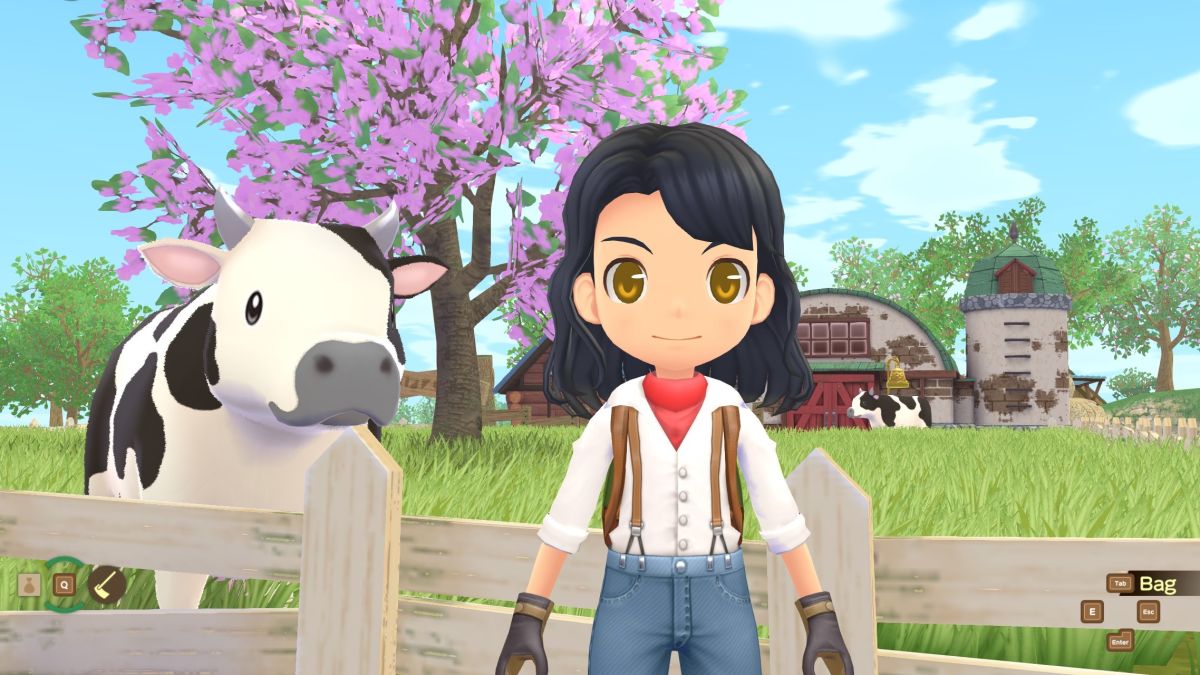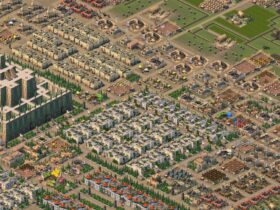Tales of Seasons: It’s a Wonderful Life Review
Tale of Seasons: A Wonderful Life is said to be a casual farming sim remake, but it reminds me of how hard Games used to be.
need to know
what is it? A slower paced remake of the classic farming sim
release date June 27, 2023
estimated payment $50/£35
developer wonderful company
publisher X Seed Game
Comment time: Nvidia RTX 2070 Super, 32GB RAM, Intel i7 8700K
steam deck Unverified
associate Official website
As I stood in a field of 36 withered radishes, my farmer’s eyes squinted in agony from the fact that I hadn’t eaten in days. I won’t have the money to buy new radish seeds until next week because I don’t know that my cow hasn’t eaten lately either and the milk she produces is so poor I can barely sell it for a pittance. Life in Stardew Valley has never been more scary.
The Good Life, a remake of 2004’s Harvest Moon with the same subtitles, opens like all modern farming sims inspired by the series, about a young man who moves from the city to the country to take over a family farm, forming friendships, family and profit. It immediately puts other recent Tales of Seasons PC releases to shame with lovely, high-quality graphics, though it does polish the edges of the old character designs more than I’d like.
(Image credit: Marvelous Inc, Xseed Games)
It has modern improvements such as:
- Motion controls don’t make me want to scream
- pronoun choice
- A total of eight marriage candidates were mixed in the original “Boy” version and the later “Girl” version
- An urgently important ability to jump over fences instead of around them
What it doesn’t modernize is the stubborn opacity of the original, the game should have come with a printed “how to play” manual in the box, I doubt it return Glosses over the same details as the in-game hint menu. This quality of “The Good Life” almost made me abandon the farm in dismay, until, like a city kid looking for romance in the valley, it earned me a reluctant liking for its idiosyncrasies.
Cultivate classics
The basics of The Good Life will be familiar to modern farm life sim players: I get up around 6am every morning, cuddle each of my chickens, milk the cows, get all the animals outside into pasture, and spend approx. half the time. Physically water the crops, then decide whether to spend the afternoon delivering gifts, building friendships with locals, going fishing, or digging up artifacts at archaeological sites.
The Good Life makes it clear that it really is a simulation of a lifetime, not the crafting, hoarding, and optimizing games I’ve become accustomed to.
During my first spring on the farm, I planted a handful of tomatoes and watermelons and saved up 1,000 gp to buy a second hen. I adore Molly the barmaid, who also moved to the valley from the city, and I spent two afternoons digging for more after learning that she liked the moon ore I found at the dig site. My progress through the first season has me delusional thinking I’ll be saving up to buy more animals and farm amenities soon.
(Image credit: Marvelous Inc, Xseed Games)
My first summer puts me in my own shoes.
I passed out in the field one afternoon, not being able to water all the crops for a day from eating too little. I left my cow ginger in a similar state, not realizing I didn’t have any long grass in my pasture for her to eat. By midsummer her health was so exhausted that I could only milk her four bottles a day of the worst quality of milk. No one wants this milk. Apparently I don’t even want this milk: I can’t sell it in my shipping box, I can’t even cook with it, and even if I managed to peddle it at my market stall, it only sells for normal quality milk 10%. town. Then I stupidly didn’t pick the radishes on time, wasting a field of crops. It wasn’t until the Mid-Autumn Festival that I corrected my mistakes and finally understood that “A Good Life” was telling me to slow down. a lot of.
This pacing makes it clear that It’s a Wonderful Life is indeed a simulation of a lifetime, not the quickly crafted, hoarded, and optimized games I’ve grown accustomed to.
Each season is only 10 days long, much shorter than the current 28-game selection, but it’s for the best because the story takes place over the years I’ve been married, had children, and watched the inhabitants of my village change. The shorter season allows me enough time to harvest only one or two sets of crops before the next season. Venue space is limited, and buying additional animals feels expensive at first, so profits grow just as slowly.
(Image credit: Marvelous Inc, Xseed Games)
But in some ways it’s kind: Instead of making me spend money on in-game luxuries like larger backpacks, The Good Life immediately provides me with a generous 40-slot inventory. Instead, I’d be incentivized to save up across seasons for larger farm upgrades, like a dairy processing room, which has a price tag of up to 150,000 gp, and I actually felt less stressed knowing I might not be able to afford one for a few years. I couldn’t even afford to buy a better tool before the first summer. It wasn’t until the second year that I unlocked hybrid crop breeding or considered breeding any of my animals. In the good life, everything comes in time.
Just like other farm sims are all about a city kid adapting to farm life, they both allow me to continue living at a city pace
Having learned the hard way, I began to see the details of life on the farm and in the town that The Good Life wanted me to adapt to in other ways. It has no storage space for crafting so I can organize my chests and crops. Instead, I keep a close eye on my slowly growing herd, breeding my first cow as necessary so she continues to produce milk, separating her from the rest of the herd as she approaches labor, and hand-feeding her milk calf.
Rain and sun come and go at random, not every day, so an early spring shower may keep me from watering my crops until evening, but an afternoon shower will have me running home to get my cows back to the valley warehouse, so that they do not catch a cold. Cooking is encouraged, but selling is not profitable, so ingredients are best used to make a hearty meal for yourself or a gift for a friend. Fish, harvested plants, and dig site finds can’t be sold in my nightly shipping box, so I have to either wait two days for local trader Van to be in town, or set up my own stall and stand there all afternoon waiting to sell items to passers-by, Just like I’m at a real farmers market. In a remake, the campaign seems best suited for modernization, but honestly, I respect that commitment.
(Image credit: Marvelous Inc, Xseed Games)
As the days in Forgotten Valley passed, I slowly built the biggest hearts I could with my cows, Ginger, Macha, and Chai, so they could produce good quality milk and give birth to calves for me to sell. I finally learned that both Matthew and Gordy had below-average friendship scores and liked milk and the “quick pickle” gift, respectively. I bought new toys for my daughter Millie, and while I dream of her inheriting the family farm, Molly’s kids are more into sports. I brought home celebratory New Year’s meals and witnessed a laid-back neighbor trying to flirt with the town’s rich girl. So far my farm has been more profitable than that first unlucky summer, but I see no reason to maximize or automate.
I’m wary of nostalgia as I start my good life. I tried and failed on the GameCube, but its groundbreaking status alone isn’t enough to recommend it over many modern farming sims. There’s no doubt that Stardew Valley, while heavily inspired by The Story of Harvest, sets the script for a modern farm life sim, complete with combat, crafting, and a great deal of control over property layout. While every farm sim is a story about a city kid adjusting to farm life, they all allow me to continue living at an urban pace: obsessively optimizing profits, dominating mine battles, and stumbling back home before passing out at 2 a.m. Home.
“It’s a Wonderful Life” was the first book that really forced me to settle, and I found that its focus on slowly and carefully tending to my farm didn’t go away; it just calmed me down. This is a different sim variety that deserves to bloom again after so many seasons of fallow.
Tales of Seasons: The Good Life: Price Comparison
Find more articles in our categories Gaming & News et Anime.
Thanks for visiting we hope our article Tales of Seasons: It’s a Wonderful Life Review
, think about share the article on Facebook, instagram and whatsapp with the hashtags ☑️ #Tales #Seasons #Wonderful #Life #Review ☑️!














Leave a Review